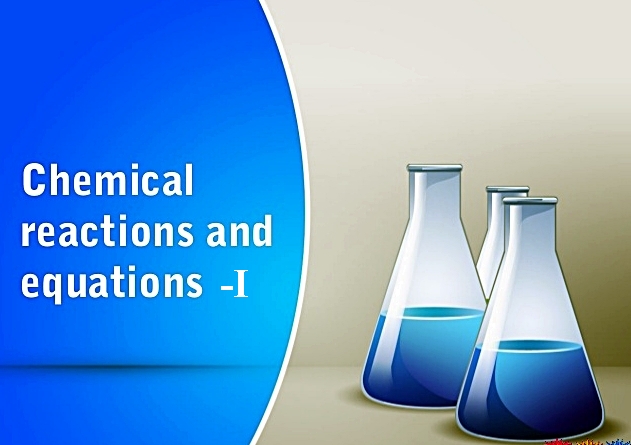Matter
Anything
which has mass and occupies space is called matter. It may be solid, liquid or
gas.
Matter is of
2 types -
1. Pure
Matter
2. Mixture
Pure
Matter
Pure
substances may be defined as material which contains only one kind of atoms or
molecules.
Pure
substances are of 2 kinds: -
- Elements -
Pure
substances which are made up of only one kind of atoms are known as elements.
All atoms in an element are identical. Atoms of different elements are
different. Elements are further classified into three types on the basis of
their characteristics. These are metals, non – metals and metalloid. Example
Fe, O, Cl, Mg
- Compounds -
Pure
substances which are made up of only one kind of molecules are known as
compounds. Atoms constituting are from two or more different elements. The
different elements are combined in fixed proportion in a compound. Example – H2O,
CO2
|
Elements |
Compounds |
|
An element is
made up of one type of atoms. |
A compound may be
made of same or different atoms. |
|
An element
cannot be broken into anything simpler than it by either physical or chemical
method. |
The constituting
elements in a compound can be separated by suitable chemical reactions. |
|
Elements have
certain characteristic properties of their own. |
Constituting
elements in a compound lose their own characteristics. |
Mixture
A mixture is a material which contains two or
more different kinds of particles (atoms or molecules) which do not react
chemically but are physically mixed together in any proportion.
Mixtures are
of 2 types:
- Homogeneous mixtures -
A mixture is
said to be homogeneous if all the components of the mixture are uniformly mixed
and there are no boundaries of separation between them. For example- Salt in
water etc.
2.
Heterogeneous
mixtures -
A mixture is
sad to be heterogeneous if all the components of the mixture are not thoroughly
mixed and there are visible boundaries of separation between them. For example-
Sand in water etc.
|
Homogeneous mixture |
Heterogeneous mixture |
|
It has no visible boundary of separation between its constituents. |
It has visible
boundary of separation between its constituents. |
|
It has a
uniform composition throughout the mixture. |
The composition
of the mixture varies throughout the mixture. |
|
It does not
show Tyndall effect |
It shows Tyndall effect |
Tyndall
Effect
If a
light is passed through a medium and its path can be seen, then the substance
is said to show Tyndall effect.
Example:
- When a beam of sunlight enters a dark room through some hole in the window,
path of light becomes visible due to scattering of light by the colloidal dust
particles present in the air of cinema hall. This shows Tyndall effect.
Solutions,
Suspensions and Colloids
Solution
-
A solution is
defined as a homogeneous mixture of two or more chemically non-reacting
substances whose composition can be varied within limits.
A solution as
2 components: -
1.
Solute : The
component which is dissolved or which is present in small amount is called
solute.
2.
Solvent : The
component which is present in larger amount is called solvent.
Types
of solutions -
1. Solid in
Liquid : - sugar in water, tincture of
iodine (in it iodine (solute) is dissolved in alcohol(solvent) etc.
2. Liquid in
Liquid : - alcohol in water etc.
3. Gas in
Liquid : - CO2 dissolved in
water in cold-drinks (aerated drinks)
4. Solid in
Solid : - Alloys such as Brass (copper +
zinc), Bronze (copper + tin) etc.
5. Gas in Gas
: - Like in air, various gases are mixed such as O2, N2
etc.
6. Liquid in Solid
: - Like copper sulphate in dental amalgam.
7. Gas in
Solid : - Gas is adsorbed over the surface of metal.
8. Solid in
Gas : - camphor in air.
9. Liquid in
Gas : - clouds and fog.
Properties
of Solutions -
1. A solution
is a homogeneous mixture.
2. Size of
particles is smaller than 1 nm (10–9 m).
3. The
particles cannot be seen by microscope.
4. It is a
stable mixture, solute does not settle down over a period of time.
5. If
solution is passed through filter paper, solute and solvent do not separate.
6. It does
not scatter light i.e. it do not show Tyndall effect.
Terms
related to Solution
1. Dilute
and concentrated solution -
A
solution having a small amount of solute in a given solvent is dilute whereas a
large amount of solute in that given solvent is concentrated when compared with
one another.
2.
Unsaturated and saturated solution -
- A
solution that can dissolve more solute in it at a given temperature is called unsaturated solution.
- A
solution which contains maximum amount of solute dissolved in a given quantity
of solvent at the given temperature and which cannot dissolve any more solute
at that temperature is called saturated
solution.
3.
Solubility -
The
maximum amount of solute that can be dissolved in a given amount of solvent is
called solubility of that solute in that solvent at a particular temperature.
Also, we
can say that
The
amount of solute needed to make saturated solution of 100 gm of solvent is
called solubility of that solute in that solvent at a particular temperature.
4. Effect
of Temperature on Solubility -
(a)
Solubility of Solid solute in Liquid:
- As
temperature increases, solubility also
increases.
-
Saturated solution becomes unsaturated.
- If
saturated solution is cooled down, some dissolved solute separates.
(b) Solubility
of Gas in Liquid:
- As
temperature increases, solubility decreases.
5. Effect
of Pressure on Solubility -
(a) Solid
solute in Liquid:
- As
temperature increases, solubility increases.
-
Pressure has no effect on solubility in case of solid solute in liquid.
(b) Gas
in Liquid:
- As
temperature increases, solubility decreases.
- As
pressure increases, solubility increases.
This is
the reason that cold drinks are packaged at high pressure.
6.
Concentration of Solution –
The concentration of a solution is the amount
of solute present in a given amount (mass or volume) of solution.
Concentration
of Solution = Amount of solute/ Amount of solution
Or
Concentration
of Solution = Amount of solute/ Amount of solvent

Concentration is the measure of amount. It is the amount of solute present in the amount of solution.
Suspensions
-
A suspension
is a heterogeneous mixture in which the solute particles do not dissolve but
remain suspended throughout the bulk of medium.
Properties
of Suspension -
1. It is a
heterogeneous mixture.
2. Size of
the particles is greater than 100 nm.
3. Particles
can be seen by naked eyes.
4. It is
unstable mixture. Solute settles down at the bottom over period of time.
5. If the
solution is passed through filter paper, solute and solvent gets separated.
6. It
scatters light when light is passed through the solution i.e. it shows Tyndall
effect.
Colloids
-
Solutions in
which the size of particles lies in between those of true solutions and suspensions
are called colloidal solutions or simply colloids. There are two phases in a
colloidal solution. These are known as dispersed phase and dispersion.
The component
present in smaller proportion is the dispersed phase while the one present in
greater proportion is the dispersion medium.
Types
of colloids -
|
Dispersed Phase |
Dispersion Medium |
Type |
Examples |
|
1.
Solid |
Solid |
Solid
Sol |
Milky
glass |
|
2.
Solid |
Liquid |
Sol |
Muddy
water |
|
3.
Solid |
Gas |
Solid
aerosol. |
Smoke |
|
4.
Liquid |
Solid |
Gel |
Jelly |
|
5.
Liquid |
Liquid |
Emulsion |
Milk |
|
6.
Liquid |
Gas |
Aerosol |
Fog |
|
7.
Gas |
Solid |
Solid
foam |
Pumice
stone |
|
8.
Gas |
Liquid |
Foam |
Shaving
cream |
Properties
of Colloids -
1. It is a
heterogeneous mixture
2. Size of
particles is smaller than suspensions but greater than solutions (1 nm to 100
nm).
3. Particles
can be seen by microscope.
4. It is a
stable mixture. Particles do not settle down at the bottom over a period of
time.
5. When the
solution passes through the filter paper, the solute and solvent do not
separate.
6.Tyndall effect is observed.











1 Comments
New coin casino | ⋆ $10 FREE on Registration - CasinoNow
ReplyDeleteNew Coin Casino – a new happyluke game on Steam. Launched in 2019, it features a wide range of casino games, 10bet including roulette, blackjack, baccarat, 인카지노